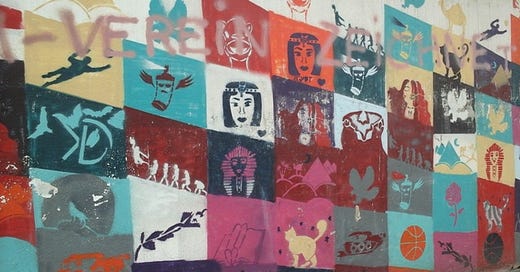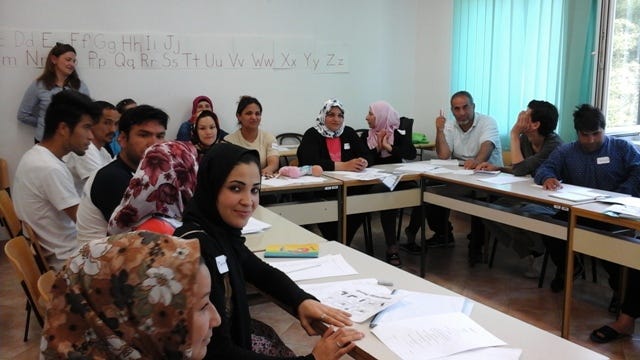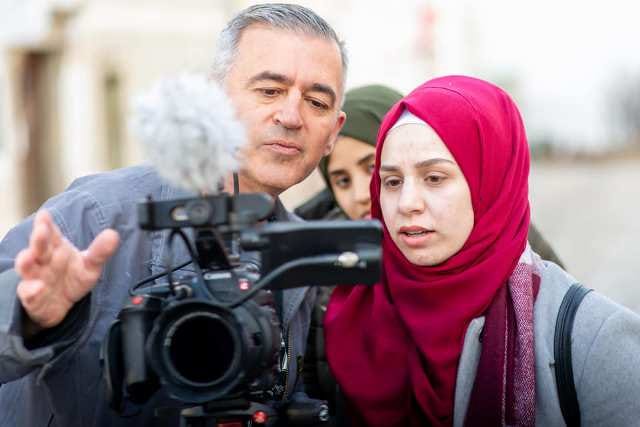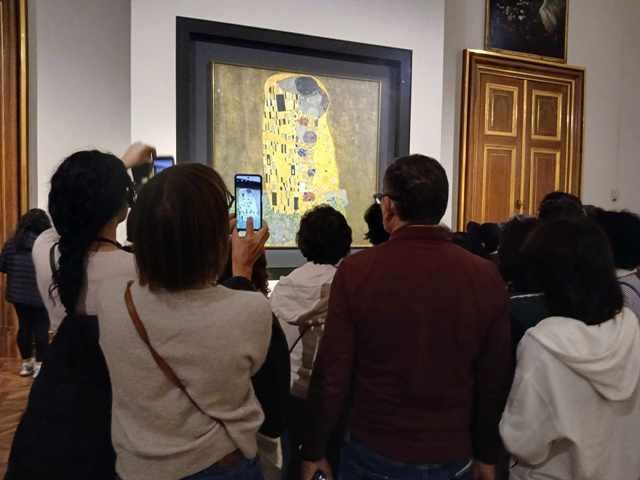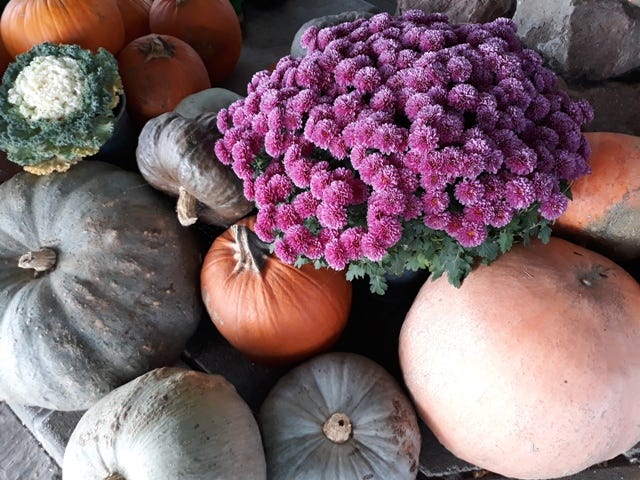Chapter Eleven: Housewarming in Vienna
If I were to choose one word to describe all the refugees I met, it would be “resilient”. Their traumas and the trials of the road were only half the story. When they arrived, they faced the uphill struggle of settling down and fitting in.
Many were separated from their families, which made the task doubly difficult. And I met some people who had been refugees twice over – for example Palestinians who had fled to Syria only to find war there; or South Sudanese who thought Libya would be a safe place until suddenly it wasn’t. Unimaginably hard.
But Austria, with a population of under 10 million, went to great lengths to welcome and include those who arrived in Vienna. At the Rathaus (City Hall), I met municipal councillor Jürgen Czernohorszky, who described Vienna as a large, multicultural house and the city’s huge effort to integrate thousands of refugees as a “housewarming”.
He pulled out graphs, showing Vienna’s impressive post-war record of accommodating refugees. There were spikes in migration in 1956, the year of the Hungarian Uprising, 1968, the year of the Prague Spring, and the 1990s, when Yugoslavia collapsed into war. The last peak represented arrivals in 2015 but migration within the EU had also contributed to Vienna’s expansion.
“In the 1970s and 80s,” said Jürgen, “people came as Gastarbeiter (guest workers, often from Turkey) and the politicians thought they would go back, so there was no need for integration. That was a big mistake and Vienna learnt from it.”
Integrating the latest wave of refugees from Afghanistan, the Middle East and Africa was an enormous challenge, he admitted. “But I am pleased to say that it was never a question of whether we should welcome them, but how.”
The priority was to get the new arrivals speaking German, as only with language skills did they stand a chance of getting a job; any job. Qualified refugees knew they would probably have to accept jobs at lower levels than they were used to, at least at first. They went gratefully to the free language classes that were laid on.
But what surprised me was that Vienna also provided classrooms so refugees could teach their children their own languages. (Educationalists say having a good level in your mother tongue makes it easier to learn a second language.) I watched a woman who had taught back in Damascus giving an Arabic lesson to Syrian children. “It’s important that our youngsters, who are picking up German quickly, also know their own culture. If they are well educated, they will be good members of the Austrian community,” she said.
I attended a fair that showcased ideas for integrating the refugees. These ranged from modest community projects like conversation cafes to quite elaborate exchange programmes. In one, Vienna music students taught their instruments to refugees, coaching them and gaining credits towards their own diplomas in a perfect win-win situation. Syrians started to play pianos, Afghans took up the violin and the Austrians passed their exams.
Some of the biggest contributions towards helping the refugees were made by people originally from Turkey and the Balkans, who had themselves struggled to make a life in Austria and understood how difficult it could be. One such person was Dessislaw Pajakoff, whose parents had come to Austria from Bulgaria and who knew all about being called a “wog” when he was at school.
Dessislaw quickly realised some of the refugees, especially those from rural Afghanistan, were unable to read or write in their own languages, let alone in German. He gave special classes to these needy ones and for some teenage Afghans the first language in which they became literate was not Dari or Pashto but German.
Another Bulgarian called Kiril Kirkov ran photography courses for refugees. He taught at an American university and twice a year, brought equipment over so that refugees who had been used to being the focus of the world’s cameras were able to express themselves in pictures. He called this project New Roots and it produced wonderful work, showing Austria through the eyes of its newest residents.
And the magazine Biber, staffed with Austrians of Balkan background, ran a media course that ended with the publication of a special edition, written entirely about and by refugees. The trainer, Amar Rajkovic, who had himself come to Austria as a refugee from Bosnia in the 1990s, was clear about his motives. “I sympathise with the refugees,” he said. “I can’t deny it; it’s in me because I can see myself in their shoes.”
While so much was being done for them, the refugees were keen to show they were not passive victims but could stand on their own feet and help themselves. Three enterprising Syrians, determined not to rely on Austrian handouts, founded a self-help group called Die Brücke des Friedens (The Peace Bridge). I visited the summer school they ran and shared in their joy and laughter.
Another group called Refugees4Refugees was a mainly Afghan club. They organised visits to museums such as the Belvedere, housing Gustav Klimt’s famous picture, The Kiss.
I went with them on a visit to the Vienna Technical Museum, which we all found illuminating and fun. The museum visits both helped the members to learn about European culture and lifted their spirits. Many were anxious about their asylum applications and feared refusals and deportation.
This cloud of uncertainty hung over two Iraqis whom I met one chilly morning on an industrial estate on the edge of Vienna. They were picking through boxes of vegetables, deciding which were rotten and which were still edible. But they were not homeless or hungry themselves; rather they were volunteering at a food bank that fought waste and distributed leftover food to the poor.
The food bank, called Wiener Tafel (Viennese Table), collected unsold food from markets and supermarkets and shared it out among charities that ran shelters for the homeless, single mothers and drug addicts, as well as some asylum seekers. “It is good for everyone,” said the Austrian coordinator. “Nature wins, the food industry economises on waste disposal and the poor benefit. For the refugees who volunteer, it’s a nice give and take. They mix with us and improve their German.”
That day, some huge pumpkins had come in from the Großgrünmarkt (wholesale vegetable market) and the volunteers were slicing them up and covering them in cling film. Two Iraqi men, both called Ali, were putting their hearts into the job.
They were waiting for the Austrian authorities to clarify their status; indeed Ali-1 was appealing against a rejection. “There’s no way back to Iraq, the Shias would kill me,” he said. “I work here every day. Wiener Tafel is like family to me.” And he showed a letter from the organisation, praising his contribution, which he hoped might add weight to his appeal.
The other Ali said he was glad to use his time for good. “There are poor refugees but also poor Austrians who live on the street. This was a shock to me when I came here – to see poor people in Europe, in a supposedly rich land.”
